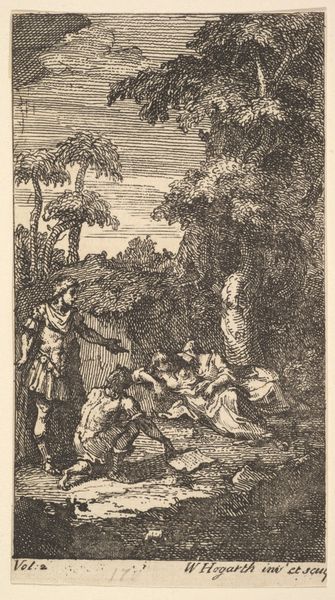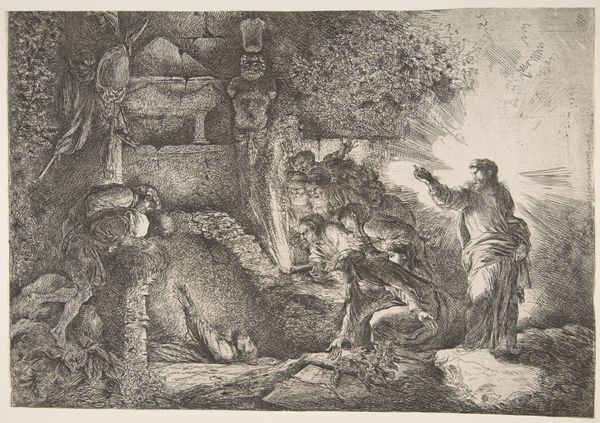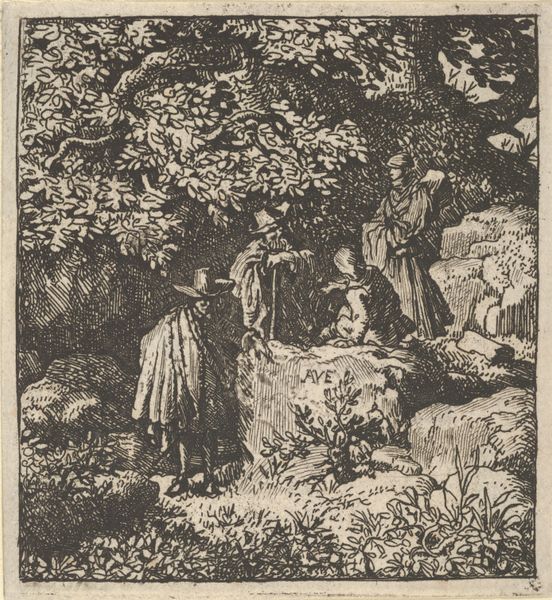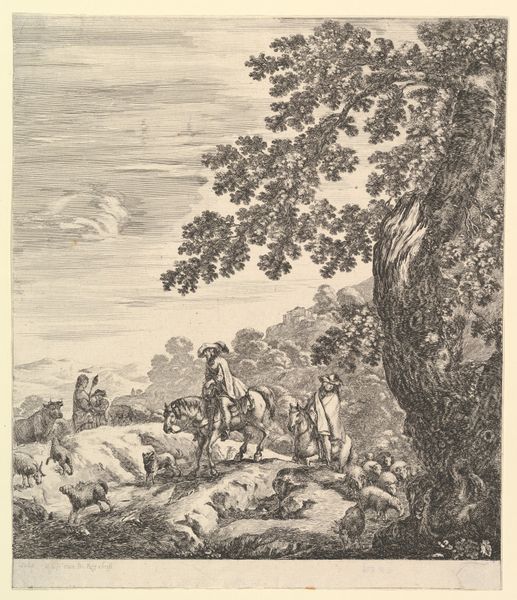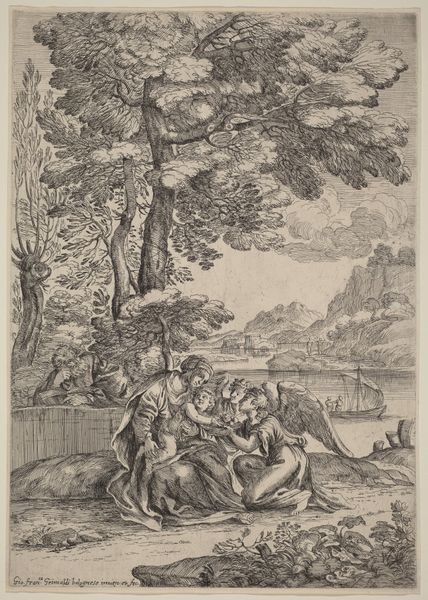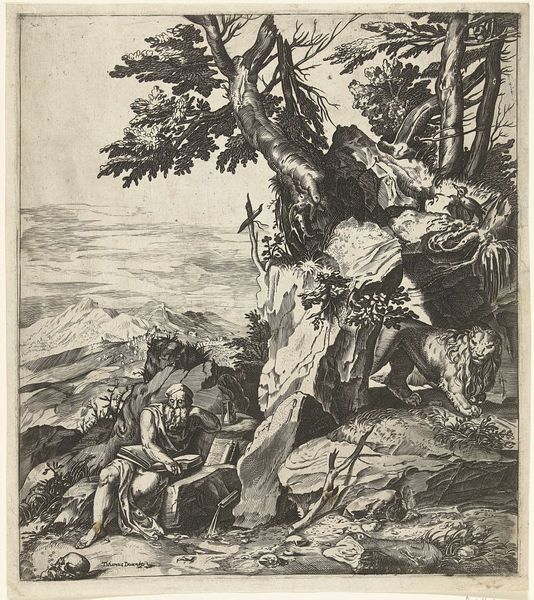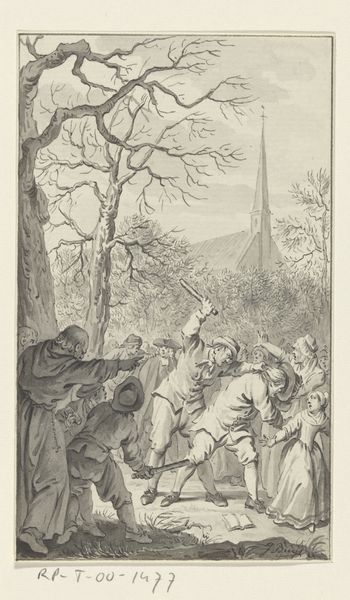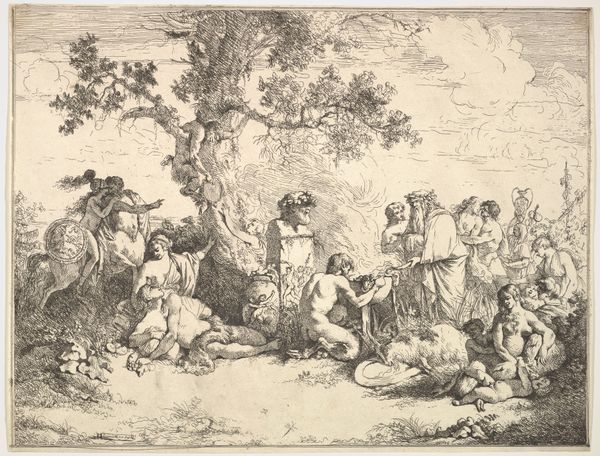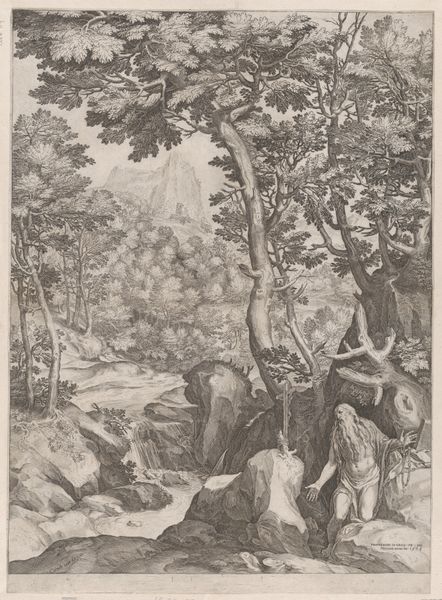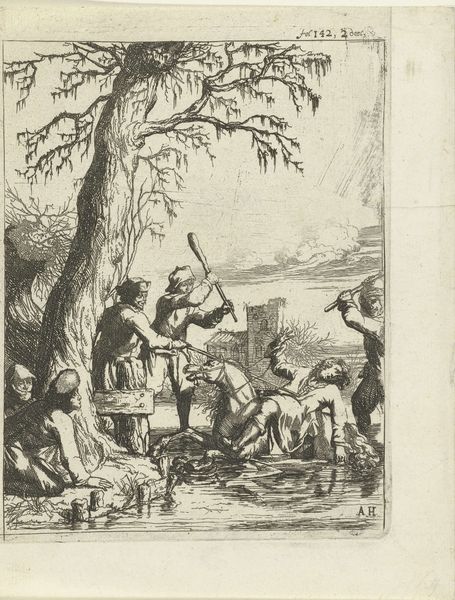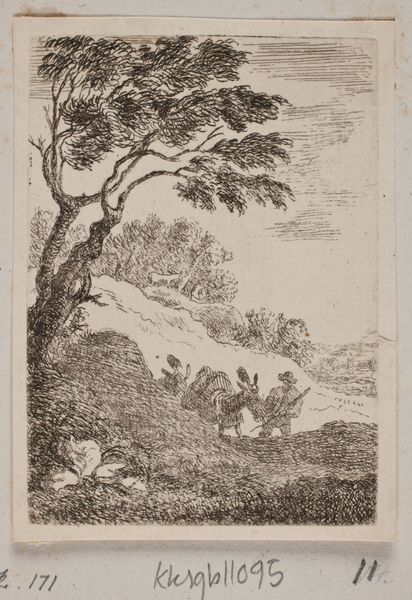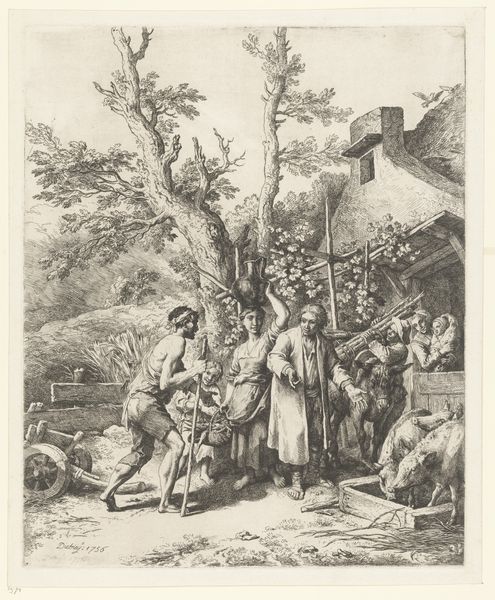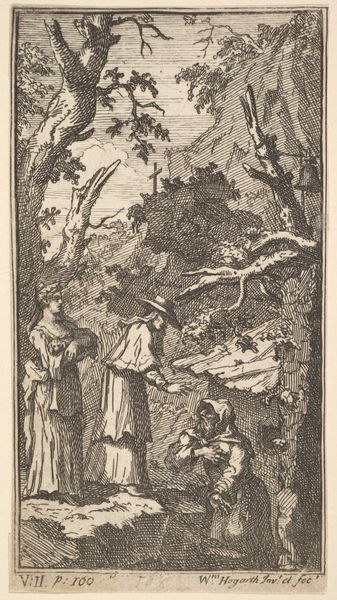
print, etching
# print
#
etching
#
landscape
#
figuration
#
romanticism
#
genre-painting
Dimensions: 106 mm (height) x 90 mm (width) (bladmaal)
Curator: Here we have "The Young Bear Hunter" created around 1825 by Christian David Gebauer. It is currently housed at the SMK, the National Gallery of Denmark. Made using etching techniques, the print presents a dynamic landscape scene, let's delve in, shall we? Editor: Absolutely. At first glance, the density of the etching creates a rather oppressive mood, almost claustrophobic. The details within the foliage surrounding the hunting party gives this picture depth while suggesting we are outsiders observing the action unfolding within the Danish forests. Curator: Indeed. What's particularly interesting to me is how Gebauer uses the genre painting format here. Genre paintings were often used to elevate the status of regular people through narratives about their lives, usually tied to folklore or myth. And to see it presented here, through print is striking in and of itself. Editor: It certainly shifts the artwork's context when disseminated as a print. Its accessibility allowed wider audiences to engage with Romanticism and the genre painting trend that it employs to emphasize regional identity. This, though, also feels like a charged image considering it highlights these rural archetypes and masculine ideals within specific notions of Danish nationalism during a very specific period of time. Curator: Precisely. We can view this image as being illustrative of Romanticism, sure, but more specifically its role within constructing Danish identity in the 19th century. By depicting the drama of this supposed bear hunt, the artist simultaneously alludes to human perseverance and triumph over the wilderness. And in Denmark during this time? Nationalism, no question. Editor: Looking at this today, I wonder, who exactly is this imagery speaking for? Romanticism has come under scrutiny for its role in bolstering notions of the idealized past or what even is to be “Danish." A focus on a specific ethnic group over others or perhaps turning a blind eye to existing power dynamics within these communities depicted. How does it reconcile with a truly representative societal narrative? Curator: These are undeniably important considerations to explore. Gebauer's work gives us a portal into a past grappling with questions that, as we can see, remain remarkably relevant. It demonstrates that the role of museums in the present has been changing quite dynamically! Editor: Yes, looking back also means re-evaluating what narratives are centered and whose stories remain in the margins. An etching of this kind holds its value through critical discussions around who gets a seat at the table and what images truly define a people.
Comments
No comments
Be the first to comment and join the conversation on the ultimate creative platform.
